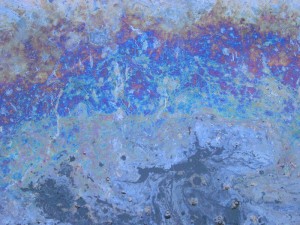If you look on the Middle Way page there is a basic explanation of what metaphysics is and why we should avoid metaphysical beliefs. However, if you apply the integration model (introduced on the integration page) it can provide a further way of understanding why metaphysics is problematic. The desire, meaning and belief page also provides some important background for this one. The basic relationship between metaphysics and integration is one of blockage. Metaphysical beliefs prevent integration from occurring.
In the process of integration, desires are united that were previously in conflict. They are able to do this because the beliefs that represent the objects of our desires are revised into more adequate ones on which a wider range of desires can be focused. To be able to create more adequate beliefs we need to have sufficient resources of meaning available to us. So we are not likely to be able to create more adequate beliefs unless our desires and meanings are integrated sufficiently for that to happen. However, very often desires and meanings can be integrated sufficiently to allow a step forward in integrating belief, but that step forward is blocked by metaphysics.
For example, suppose there is a devout Catholic who has done Catholic forms of meditation and also developed a good familiarity with the range of ideas and symbols used in the rich Catholic tradition. Her desires and meaning have been integrated to a good extent by these experiences. However, her belief in the dogmatic truth of the Church’s teachings is an impediment to her investing that progress in beliefs that will be more adequate to conditions than the ones she currently holds. Perhaps she remains paralysed by guilt about masturbation, or has too many children and thus no time for reflection due to obeying the Church’s teachings on contraception, or feels unable to contradict the authority of the local priest so as to make him aware of a major administrative mistake.
The way in which metaphysics blocks integration of beliefs is that of repression. Because a metaphysical belief is absolute (i.e. cannot be incrementalised) and based on assumptions that cannot be questioned (making it apparently infallible), it can only be held by removing alternatives from consideration rather than in a way that allows comparisons with alternatives. Because the claim it makes cannot be a matter of degree, the alternatives have to be ruled out altogether in order for the belief to be affirmed at all. 
It is rather as you have a restricted area of water and pour a quantity of oil into it. The oil (which here represents metaphysical belief) will cover the entire surface of the water, preventing anything else in the water having contact with the air above, just as metaphysical belief keeps all other possible beliefs out of consideration. Compare this to pouring polystyrene balls into the water. The polystyrene balls might cover a fair portion of the surface, but they will also leave spaces by which the water beneath can have contact with the air. The water will remain oxygenated, whereas it would not stay so for long with the oil poured over it. The polystyrene balls here represent provisional beliefs, that whilst still occupying a fair portion of our conscious awareness, are not absolute and do not monopolise it or repress alternatives.
The beliefs repressed by metaphysical beliefs will be related to desires that will also need to be repressed, and thus psychological conflict is likely to result. Just as a suffocating fish might come to the surface and flail around in the oil to get oxygen, the Catholic in the earlier example is likely to have rebellious and disruptive thoughts that remain troublesome. The goal of overcoming sin will remain unrealisable, and sin will instead be institutionalised by the reliance on repression. To actually address the causes of sin in a sustainable way, the Catholic will need to cease relying on absolute ‘truths’ accepted from authorities.
The image of the oil and the polystyrene balls could also be used to illustrate the difference between repression and suppression. Obviously we cannot act in the world whilst keeping all possible options open all the time. We have to choose a particular interpretation of our experience, representing the world in a particular way, and act on the basis of that interpretation. That interpretation will, for the moment, leave other possible beliefs out of active consideration. However, provided we leave time in our lives for moments of deeper reflection, those alternatives will come back and be considered in a healthy way, just as the fish living beneath the polystyrene balls may come to the surface in a quiet moment, even if we are not aware of it most of the time. The important thing is not to try to kill the fish. Indeed, we may even feed it from time to time with a little scepticism.
See Cognitive biases page for a detailed account of how the different biases identified by empirical psychology can each be related to metaphysical assumptions and resolved through integration.
Other related pages: Integration, Objectivity, Desire, meaning and belief.
Picture: Diffraction of oil on water by Creativity103 (Wikimedia Commons – Creative Commons licence)
